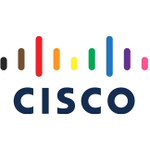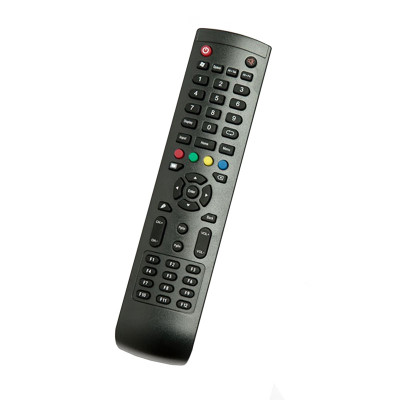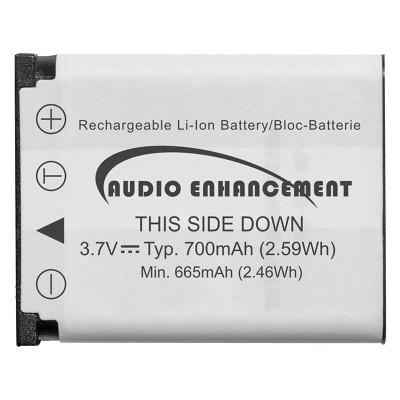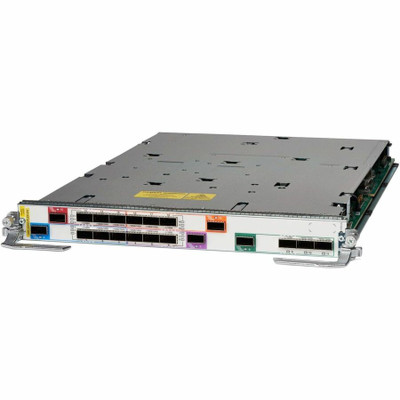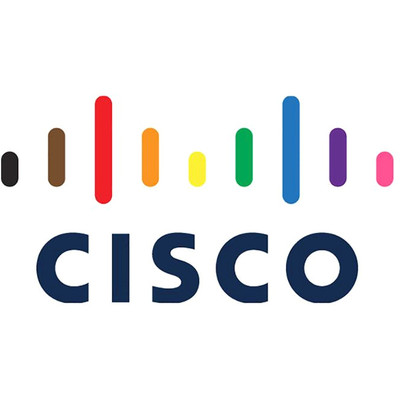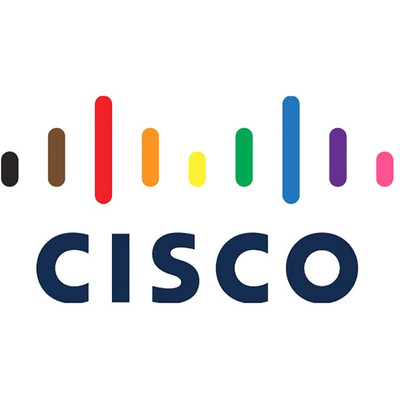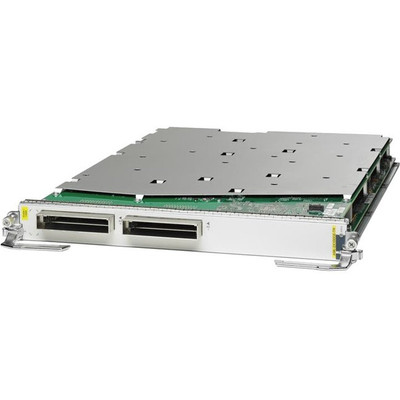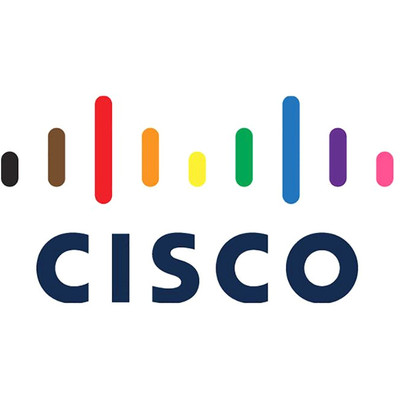The Cisco®ASR 9000 Series 5thGeneration High-Density Multi-Rate Line Cards deliver industry-leading high density, with line-rate 100, 200, and 400 Gigabit Ethernet ports, to any slot of a Cisco ASR 9000 Series Aggregation Services Router. These high-capacity line cards are designed to remove bandwidth bottlenecks in the network that are caused by a large increase in Video-on-Demand (VoD), IPTV, point-to-point video, Internet video, and cloud services traffic. A single 100 Gigabit Ethernet port can now replace large 10 Gigabit Ethernet link aggregation bundles to simplify network operations. Based on QSFP technology, this line card has flexible interfaces that support 400 Gigabit Ethernet, 200 Gigabit Ethernet, 100 Gigabit Ethernet, 40 Gigabit Ethernet, and 10 Gigabit Ethernet modes, so it gives customers the flexibility to mix and match interface types on the same line card and offers operators the readiness for mass-scale networking.
These different interface modes can be configured easily through the Command Line Interface (CLI) without resetting or restarting the line card. Using a "green design," these line cards also let customers put an unused slice in power-saving mode to reduce power consumption. With these capabilities, the ASR 9000 Series line card and routers provide the fundamental infrastructure for scalable Carrier Ethernet and IP/Multiprotocol Label Switching (IP/MPLS) networks, promoting profitable business, residential, and mobile services.
Features and benefits
The ASR 9000 Series 5thGeneration High-Density Multi-Rate Line Cards are fully compatible with the Cisco ASR 9006 Router, ASR 9010 Router, ASR 9904 Router, ASR 9906 Router, ASR 9910 Router, ASR 9912 Router, and ASR 9922 Router. However, the chassis may require a hardware update for the fabric cards, RP/RSP card, and cooling systems. The multi-rate port line cards are designed to support full line rate, non-over subscribed traffic.
This power-optimized line card, at such high density and scale, allows customers to reduce Capital Expenditures (CapEx) and Operating Expenses (OpEx) while offering highly predictable, managed transport services for Core and Peering applications. The Cisco QSFP breakout option further increases the capability of each line card to support large-scale aggregation as well as the 10 Gigabit Ethernet Satellite Network Virtualization (nV) System mode on the ASR 9000 Series Router.
The Cisco A9K-20HG-FLEX-SE and A9K-20HG-FLEX-TR line cards (Figures 1 and 2) provide 20 ports of 100G or 5 ports of 200G or 5 ports of 400G, or a combination of ports not to exceed 2T in total. Five of the 20 ports can be upgraded to 400GE through a license on a per-port basis. These line cards use QSFP28/QSFP-DD form factor transceivers and can be used in any of the ASR 9000 Series of modular chassis.
The Cisco A9K-8HG-FLEX-SE and A9K-8HG-FLEX-TR line cards (Figures 3 and 4) provide 8 ports of 100G or 2 ports of 200G or 2 ports of 400G, or a combination of ports not to exceed 0.8T in total. Two of the 8 ports can be upgraded to 400GE through a license on a per-port basis. These line cards use QSFP28/QSFP-DD form factor transceivers and can be used in any of the ASR 9000 Series of modular chassis.
These cards are supported starting with Cisco IOS XR Software Release 7.1.15.
The QSFP-DD optics have the same mechanical characteristics and cage size as the QSFP28 optics, and the same ports can act as 10 GE (via breakout options), 40 GE, 100 GE, 200 GE, or 400 GE, therefore allowing operators to migrate to 400 GE at their own pace as the need arises.
- Delivers dependable routing protocol functionality with feasible data packets forwarding to allow optimal Line Card usability
- 10GBase-X network technology for reliable connectivity with maximum productivity
- 200Gigabit Ethernet - Eases both bandwidth and management constraints
- Supports optical fiber cable for durable performance, minimal signal loss, and fast data transfers to greater distances
- Line Card with data networking application/usage for maximum productivity and usability


